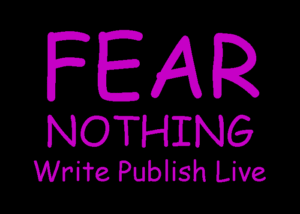 |
 |
 |
 |
|
| Visit My Website at WayneAEnglish.com | ||||
Writing a work of fiction is challenging. There’s lots to consider and lots to get right else the reader will become disillusioned with the work and not read any more of your publications. Here’s the way I work fiction:

- Closely consider if the work is publishable, meaning if it is commercially viable. this is mandatory of you want to attract an agent or publisher.
- Make a rough outline and identify what you need to research. Then complete your research before you start writing.
- Now go back through your rough outline and bring it to fruition, but don’t hesitate to change I later if that’s required.
Look for:
- Time line, does everything happen in the right order. Be especially careful with character names, flashbacks, days of the week, years and that everything happens in the correct order.
- verify the spelling of all places, character names, vehicle names, place names. This is particularly important if things take place in the past. Just because a city is named Constantinople does not mean it was named that when the toys takes place. Check and Verify.
- If using historical characters that actually lived, be sure you get the names right.
- Start writing and complete the manuscript. When you come up against a passage that you need further research on, don’t stop writing. Mark it with XXX and keep going. Later search for XXX and complete the passage.
- The best editing tip I ever is from the brilliant Felix Giordano, author of the Jim Buchanan novels.
- Save the work as a PDF and then have the PDF read itself to you as you follow along in your word processor. It will uncover a vast number of edits.
- Now you’re at the end of your first edit. First edit? Yes, you’ve only just begun.
- Attention: You may be tempted to do just one edit. That is not recommended. If you a writer who does no edits, your work and your checkbook will suffer. Edit your work.
- Now comes the second edit. This time you look at the timeline. Look at characters, do they come and go at appropriate times? Have you transposed any character names? Are there long passages of conversation that don’t identify who is speaking? If so use character names, like this:
-
- “’s silly, Bob.” The reader knows that bob is not the one speaking.
- Third edit? Yes, by now you’ve lived with the story and manuscript for some months and have additional ideas to add, and you’ve read books on writing that have sparked your imagination and pointed out superb enhancements. Now’s the time to add all of those things. So add them, and then edit the work again to verify that everything works in the proper order.
- A year before the work is complete start your marketing campaign.
- If you’re looking for an agent get started. Ditto for a publisher.
- Complete all edits, now write the front and rear matter. Don’t neglect to mention your website, blog, newsletter is you use them. And other books you’ve written. to see how this is done, look at any prolifically published author.
- Get your cover made.
- Okay, you’re done. Publish it, if you’re an Indy author, if not keep seeking an agent or publisher.
- This project is complete, except for marketing, sales, public speaking, media releases, speaking at writer;’ groups, and getting your next project going. Hey, nobody said being a write was easy. Remember, a wise man once said, “Ain’t got to be easy, just got to be done.”
Please leave your comments below. What you think of this blog is important, so please don’t keep your thoughts to yourself. Thank you – Wayne A. English